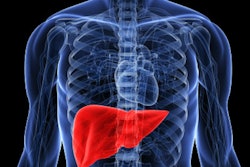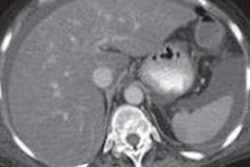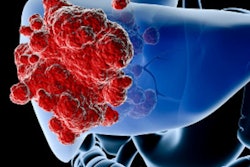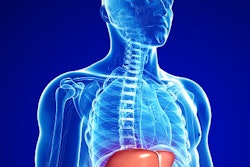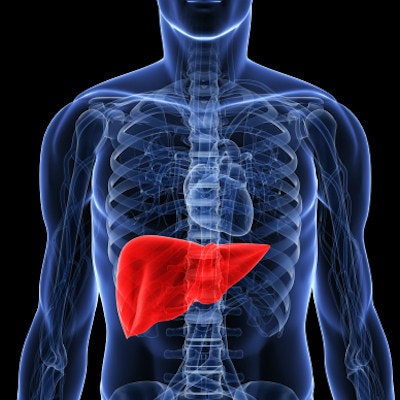
When it comes to ultrasound, radiologists have a number of options for effectively diagnosing advanced fibrosis in patients with nonalcoholic fatty liver disease (NAFLD) -- as well as "mapping" liver stiffness and tracking liver cancer treatment, according to research delivered at the RSNA 2018 meeting.
Three presentations described the performance of various ultrasound techniques for liver indications, including shear-wave elastography (SWE), MR elastography (MRE), transient elastography (TE), and contrast-enhanced ultrasound.
Take your pick
Dr. Alessandro Furlan of the University of Pittsburgh and colleagues found that SWE, MRE, and TE are all viable alternatives to liver biopsy for diagnosing advanced fibrosis in patients with NAFLD.
"Since determination of liver fibrosis via biopsy is invasive and associated with significant cost, patient discomfort, and potential risks, several alternative approaches have been developed, including elastography," Furlan told session attendees.
The study included 62 patients, all of whom had biopsy-proven disease. The patients underwent SWE, MRE, and TE within one year of the biopsy; the researchers evaluated each type of imaging exam's performance with area under the receiver operating characteristic (ROC) curve analysis.
The area under the ROC curve for identifying advanced fibrosis was 0.89 for SWE, 0.95 for MRE, and 0.86 for TE; for significant fibrosis, the values were 0.80 for SWE, 0.85 for MRE, and 0.77 for TE. When each modality was compared with the others, there was no statistically significant difference in performance, Furlan said.
"2D shear-wave elastography, MR elastography, and transient elastography are valid alternatives to biopsy for the diagnosis of advanced fibrosis in patients with nonalcoholic fatty liver disease," he concluded.
Fewer biopsies
In a related presentation delivered during the same session, Dr. Rolf Reiter of Charité University Medicine Berlin shared study results suggesting that multifrequency MR elastography (mMRE) is a promising tool for mapping the distribution of fibrosis throughout the liver, which could, in turn, reduce the need for liver biopsy.
Reiter and colleagues evaluated mMRE's diagnostic accuracy by using multifrequency MR elastography in 43 patients with hepatic fibrosis. The study also included a group of 16 healthy people for comparison.
Tomoelastography stiffness maps showed high spatial resolution and anatomical details, allowing for high diagnostic accuracy for staging hepatic fibrosis, Reiter reported.
"Tomoelastography [showed] an excellent diagnostic accuracy for staging hepatic fibrosis," he told session attendees. "[Our work suggests that] mMRE-based tomoelastography might reduce the need for invasive liver biopsies and indicate the distribution of fibrosis within the entire liver."
Find cancer with contrast
Finally, a team led by Dr. Daniel Ohngemach of Hofstra Northwell School of Medicine in Manhasset, NY, found that contrast-enhanced ultrasound (CEUS) helps clinicians further evaluate treated liver lesions and offers a good alternative for patients who can't handle contrast-enhanced MR or in whom MR findings are inconclusive.
"Minimally invasive treatments for hepatocellular carcinoma continue to rise in popularity," Ohngemach told RSNA session attendees. "Monitoring treated lesions for residual tumor has long been accomplished by contrast-enhanced CT or MR, but there is growing interest in the use of CEUS to monitor treatment response following thermoablation and embolization of hepatocellular carcinoma."
Ohngemach's group compared post-treatment findings on CEUS with findings on contrast-enhanced CT or MR, reviewing 28 lesions in 24 patients who underwent CEUS examinations for the evaluation of liver tumors that had been treated by thermoablation and/or embolization between April 2017 and March 2018.
Of the 28 lesions, 22 had contrast MR images for comparison, Ohngemach said. CEUS identified malignancy in 86.7% of lesions that were positive on contrast MR and did not show enhancement in any lesions that were negative on contrast MR, the group found. It also confirmed cancer in two cases characterized as indeterminate.
CEUS definitely shows promise for monitoring the success of liver cancer treatment, Ohngemach concluded.
"CEUS demonstrated high agreement rate with [contrast MR] in our study population of ablated and embolized hepatic lesions, and there were several cases for which it outperformed MRI or allowed for evaluation in patients who could not undergo contrast-enhanced MR," he said. "These results suggest an ongoing role for CEUS as an adjunct to cross-sectional imaging in the monitoring of hepatocellular carcinoma."





